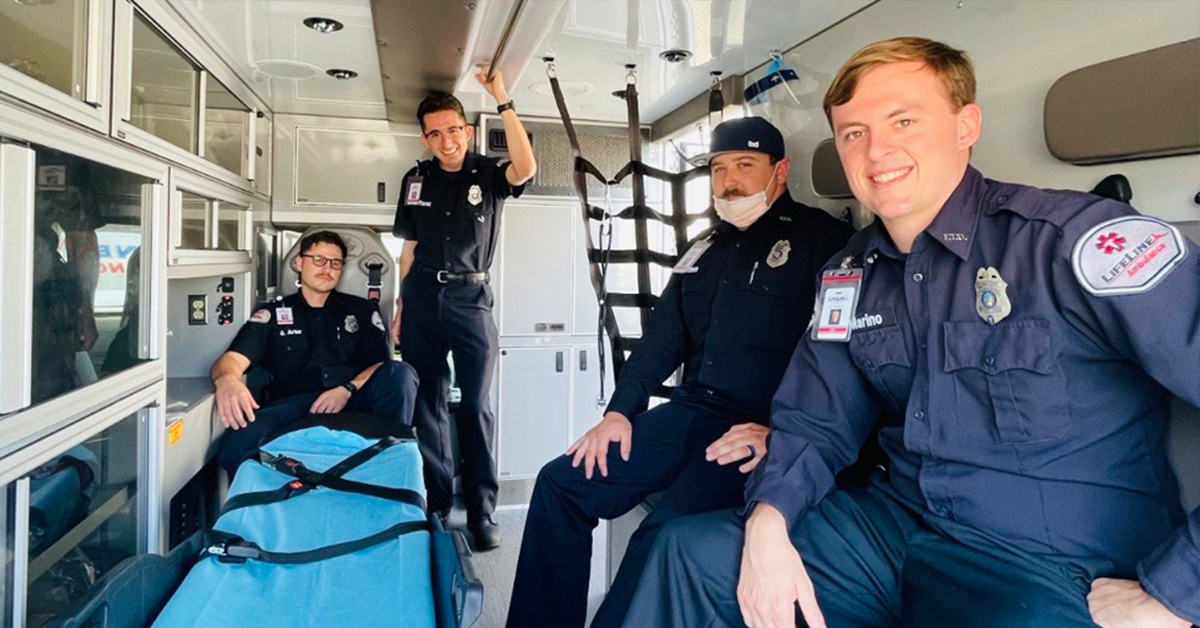Emergency medical services are the backbone of every community, responding when lives hang in the balance. Yet, with growing demands and limited resources, even the strongest systems are feeling the strain. Max Gorin believes that the key to lasting change lies in empowering people and building smarter, more connected EMS networks. His approach blends compassion with practical leadership, ensuring that no responder feels unsupported and no call goes unanswered. It’s time to look at what truly strengthens the frontline and how every community can take part.
Putting People First
At the heart of every strong EMS system are the people who answer the call. Supporting them goes beyond providing equipment or training; it’s about creating an environment where they can thrive personally and professionally. Here’s how putting people first makes all the difference:
Invest in Ongoing Training and Education
When responders keep learning, they stay sharp and ready for whatever comes their way. Offering chances to build new skills doesn’t just make them better at their jobs. It also gives them reasons to stick around and grow with the organization instead of looking elsewhere.
Prioritize Mental Health and Emotional Support
The work of EMS professionals is emotionally demanding, and consistent access to mental health resources is essential. Counseling, peer support groups, and open conversations about stress can help prevent burnout and improve overall well-being.
Foster a Culture of Teamwork and Respect
The operation as a whole is strengthened when responders have mutual trust and support. Building unity and morale across shifts and departments is facilitated by praising accomplishments and encouraging teamwork.
Encourage Leadership Development
Empowering team members to take on leadership roles builds confidence and prepares the next generation of EMS leaders. Leadership training ensures that experience and knowledge are passed down effectively.
Listen to Frontline Feedback
The people doing the work every day see things that leadership often misses. When you actually ask for their input and then do something with it, they feel like they have skin in the game. Plus, the decisions that come out of it are grounded in what’s really happening out there, not just what looks good on paper.
Building Smarter Systems, Not Just Bigger Ones
Effective EMS systems focus on improving efficiency rather than merely growing. Communities can improve the speed and efficacy of every response by emphasizing efficiency, communication, and data-driven tactics. This is how it can occur:
Use Data to Guide Decisions
Finding patterns, gaps, and areas for improvement is aided by gathering and evaluating response data. Teams can more efficiently distribute personnel, vehicles, and supplies when they know where resources are most needed.
Streamline Communication Across Agencies
Smooth coordination between EMS, hospitals, and public safety partners can save precious minutes during emergencies. Simple upgrades, like shared digital platforms or unified dispatch systems, can make collaboration seamless and reduce response delays.
Leverage Technology for Faster Response
Better decision-making is supported in real time by contemporary tools like telemedicine, GPS tracking, and predictive analytics. Technology can give crews immediate access to vital patient data and assist dispatchers in more effectively deploying units.
Plan Resources Strategically
Just adding more ambulances or hiring more staff without a plan doesn’t solve anything. EMS leaders need to figure out where coverage is actually lacking. Smart planning means every dollar spent improves reliability and patient care rather than just making the system look bigger.
Create Feedback Loops for Continuous Improvement
Encouraging feedback from field staff helps uncover operational challenges that data alone might miss. When responders have a voice in refining systems, it creates a culture of ownership and innovation.
Community Connection is the Real Lifeline
Emergency response is at its best when the community and EMS teams work hand in hand. Building trust and awareness can make the difference between panic and preparedness when crises strike. Here’s how stronger community connections can save lives:
Promote Public Awareness and Education
Teaching basic emergency response skills like CPR or first aid empowers people to act quickly before help arrives. A sense of shared responsibility for safety can also be fostered through school programs and community workshops.
Encourage Open Communication with Residents
When people understand what EMS teams do and how they operate, they’re more likely to cooperate during emergencies. Open lines of communication foster respect and make it easier for responders to do their jobs effectively.
Partner with Local Organizations
Collaborating with schools, businesses, and local groups helps spread emergency readiness throughout the community. These partnerships can also improve resource sharing and outreach during major incidents.
Build Trust Through Consistent Presence
EMS visibility at local events, fairs, and community programs helps humanize the responders behind the sirens. A familiar and friendly presence creates reassurance and strengthens public confidence in emergency services.
Encourage Feedback and Collaboration
Inviting community input helps EMS leaders understand local concerns and adapt their approach. When residents feel heard and involved, they become true partners in keeping the community safe.
Preparing for Tomorrow’s Challenges Today
The world of emergency response is constantly evolving, and staying ahead means planning for what’s next. From natural disasters to new public health threats, EMS systems must be ready for anything. Here’s how preparation today can protect lives tomorrow:
Invest in Future-Focused Training
Ongoing education helps responders stay current with new medical techniques and technologies. Regular simulations and scenario-based exercises ensure teams are confident when facing real-world emergencies.
Strengthen Collaboration Across Sectors
Partnerships between EMS, hospitals, government agencies, and private organizations make large-scale responses more efficient. Working together builds shared protocols and ensures everyone is aligned when crises occur.
Adopt Flexible and Scalable Systems
Emergencies rarely follow a script, so systems must adapt quickly to changing conditions. Flexible response plans allow EMS teams to scale operations up or down without losing effectiveness.
Integrate Technology for Better Readiness
Predictive analytics and cloud-based communication systems are examples of digital tools that can help predict risks and expedite response coordination. Adopting innovation enhances decision-making in real time as well as readiness.
Prioritize Resilience and Mental Health
Resilient teams are the backbone of long-term readiness. Supporting mental health and stress management prepares responders to stay calm, focused, and effective no matter what challenges arise.
Strengthen the Frontline Together
Strengthening EMS systems starts with people, planning, and community working together. Max Gorin reminds us that resilience is built not only through resources but through shared commitment and compassion. When every responder feels supported and every community stays engaged, the frontline becomes stronger for everyone.


